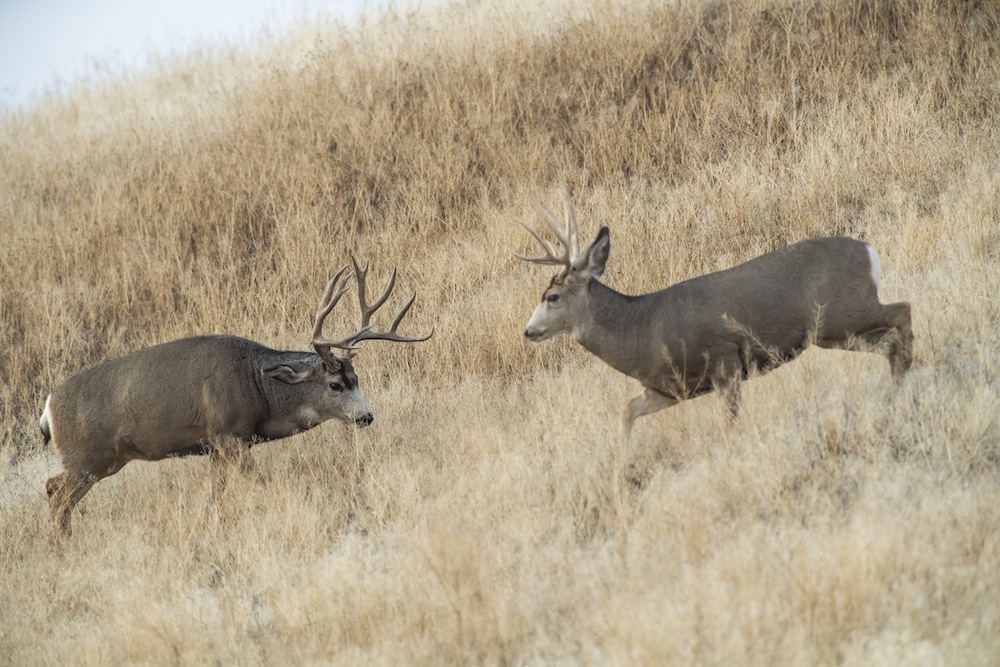Glassing deer through binoculars on early September evenings is enough to excite any bowhunter. After all, finding deer is half the battle to hunting them successfully.
Many hunters use that summer scouting to determine their stand locations for the rest of the season. They set up, hunt a few times in the early season and smile at the thought of having figured the elusive creatures out. But then, just like that, the deer seem to disappear, often not showing up again until the rut starts in early November.
The hunting community deemed this unproductive time period the October lull because of the apparent “lull” in deer activity. But according to research done by Dr. Mark Conner and graduate student James Tomberlin at Chesapeake Farms in Maryland, deer movement actually increases steadily from late summer through the rut. So, if deer are moving more, why are hunters seeing them less often?
David Westmoreland, owner of Prairieland Outfitters and a real estate agent for Whitetail Properties, said it’s common for people to stop seeing deer come October, so they write it off as a lull. In reality, it’s just a misunderstanding of deer behavior.
“I don’t believe in the October lull,” he said. “The lull is because there’s a constant change of food sources. Summer food sources come to an end, and it’s the most bountiful time of food for whitetails. The beans are still green, acorns are falling and corn is being cut, so there’s a tremendous amount of food. They have to eat every day, but where they eat could change by the day.”
Westmoreland has bowhunted for 45 years, and he retired from work in the archery industry in 2018. He’s killed deer — and has seen others shoot deer — throughout the season, including in October.
“There’s a party in the whitetail woods every day of the year,” he said. “Sometimes you’re invited and sometimes you’re not, but when you’re not it’s because the deer changed food sources. You have to be in tune with what’s going on and stay on them all the time (to stay in the action).”

Although changing food sources are the main culprit for slower hunting, Westmoreland said two other changes could also affect deer sightings:
1. Buck bachelor groups break up.
Bucks travel together in bachelor groups in summer, but as the days shorten and testosterone levels rise, they start to spar to establish pecking order. Dominant bucks run subordinate bucks out of their fall territory, and they live as rival loners throughout the rut.
“Bachelor groups are still together in September, but they start to break up in October,” Westmoreland said. “You might have a buck that lived in one area all summer but is now a mile away. That happens at the exact same time (as shifting food sources), and bucks change their routines and where they travel as a result.”
2. Does start to get harassed and go into hiding.
As a buck’s testosterone level rises in early October, he’ll start to actively search for, follow and investigate does. That behavior affects doe behavior, especially if the does aren’t ready to breed.
“Does become harder to come by, too, because the bucks are starting to chase and become more aggressive,” Westmoreland said. “They don’t seem as plentiful as they once were because they’re not as visible out in the open.”
Hunting pressure might also be to blame as cooler weather inspires more bowhunters to hit the woods and gun hunters prepare for their season. Regardless, deer still live in the woods; you just have to find them.
Westmoreland said many hunters are scared to scout after the season starts because they don’t want to leave their scent in the woods. He said that’s understandable, but he still recommends going afield from time to time throughout October to locate deer. If you find their food sources and where they hang out, go to them. Being flexible and moving with the deer are the only ways to ensure you’ll continue to see them throughout the season.
It sounds easy enough, but Westmoreland said finding and hunting deer in October is still admittedly challenging. “It’s tough this time of year until November,” he said. “Don’t get discouraged or burn yourself out hunting hard if you aren’t seeing deer.”
If you find yourself frustrated by the situation, take a break and start again with an open mind and new resolve. One of the best things about hunting October is knowing that it’s only going to get better.